Climbing Samanar Hills in Madurai for a slice of history
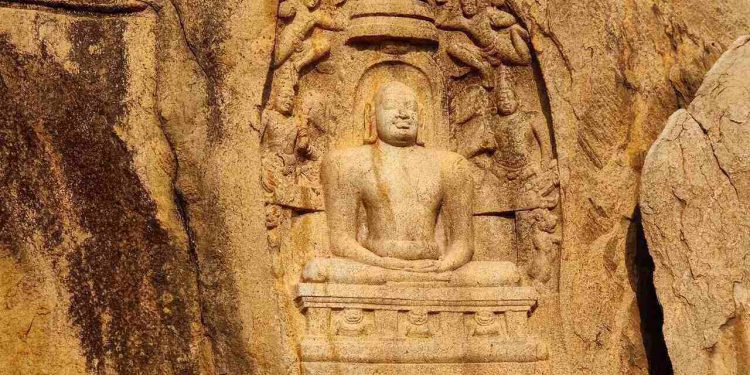
A few years ago, I had attended a course on Jainism in South India, primarily in Tamil Nadu and I was fascinated to visit some of the hidden and isolated destinations near Chennai where Jain monks had lived centuries ago in caves carved inside hillocks. One such destination was Thirumalai near Thiruvannamalai where a 1000 year old Jain temple stands. The ancient Jain heritage site, patronised by princess Kundavi, sister of the legendary king Raja Raja Chola was filled with cave temples, paintings, monoliths, temples on hillocks and carvings — all probably dating between 10th and 15th Centuries. The caves had been the haven for several monks and we saw the walls painted in rich colours, depicting deities, symbols, their ideologies through flowers, animals and human forms. I learnt that Jains settled in and around Madurai, Kanchipuram and Thiruvannamalai, and are an indigenous community. The curiosity got the better of me and I started exploring more of these Jaina sites in Tamil Nadu like Chitral near Kanyakumari. But it was after a visit to Thenparankundram, located behind the well known Thirupurankundram Murugan cave temple in Madurai, that I learnt that the erstwhile Pandyanadu and the heartland of Tamil culture is known for several Jain caves carved in remote hillocks which were once home to Jain monks. One of them is the Samanar Hills Madurai (Jain Hills), located about 15 kms away from Madurai in Keelakuyilkudi village. Samanar Malai as its called in Tamil is one of the remote places to see in Madurai and is known for the Jain caves Madurai and the Jain sculptures carved on the walls.

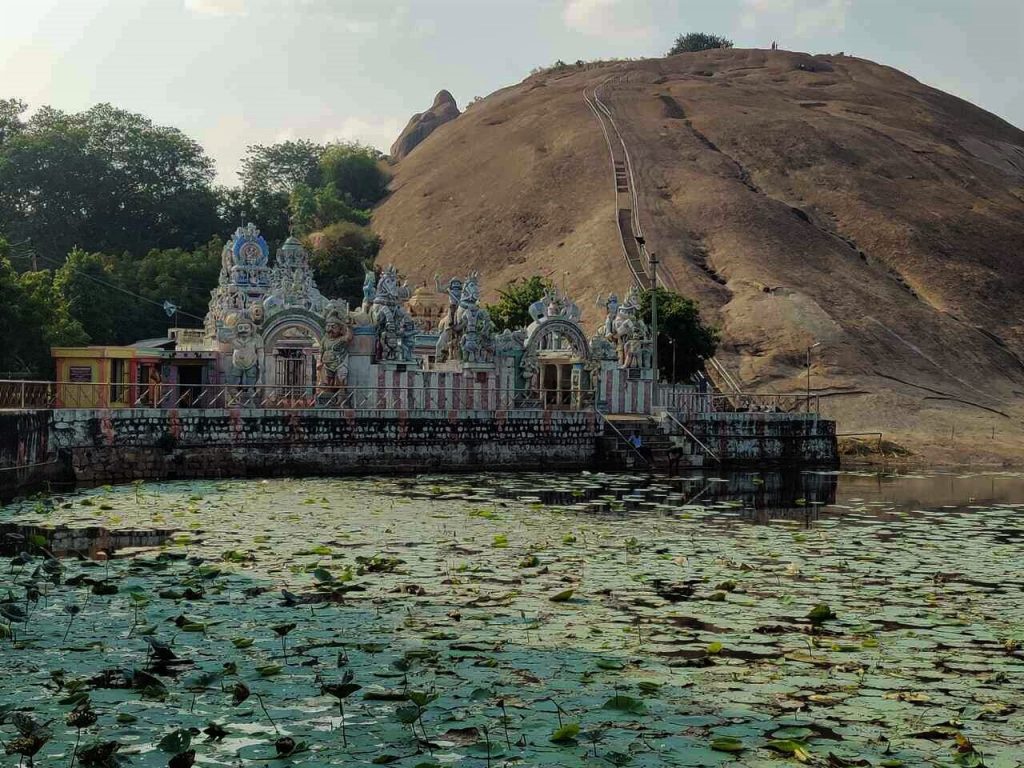
It was a pleasant afternoon and the sun had been rather merciful. I stood at the foot of the Samanar Hills and looked at the vast expanse of lake spread out in front of me. Brimming with lotuses and lilies, the pretty lake also had its share of moss and muck floating alongside. A large Ayyanar shrine, dedicated to the guardian deities of the village filled with colourful carvings stood in front of the lake. A couple of old men were sitting under the shade of a banyan tree. We were the only humans lost in this verdant landscape, filled with dense shrubbery. For a moment, I felt like I was in an idyllic village, yet slowly I felt lost and desolate. Personally, I realized that it was one of the most isolated places to see in Madurai known for the Jain sculptures and carvings.
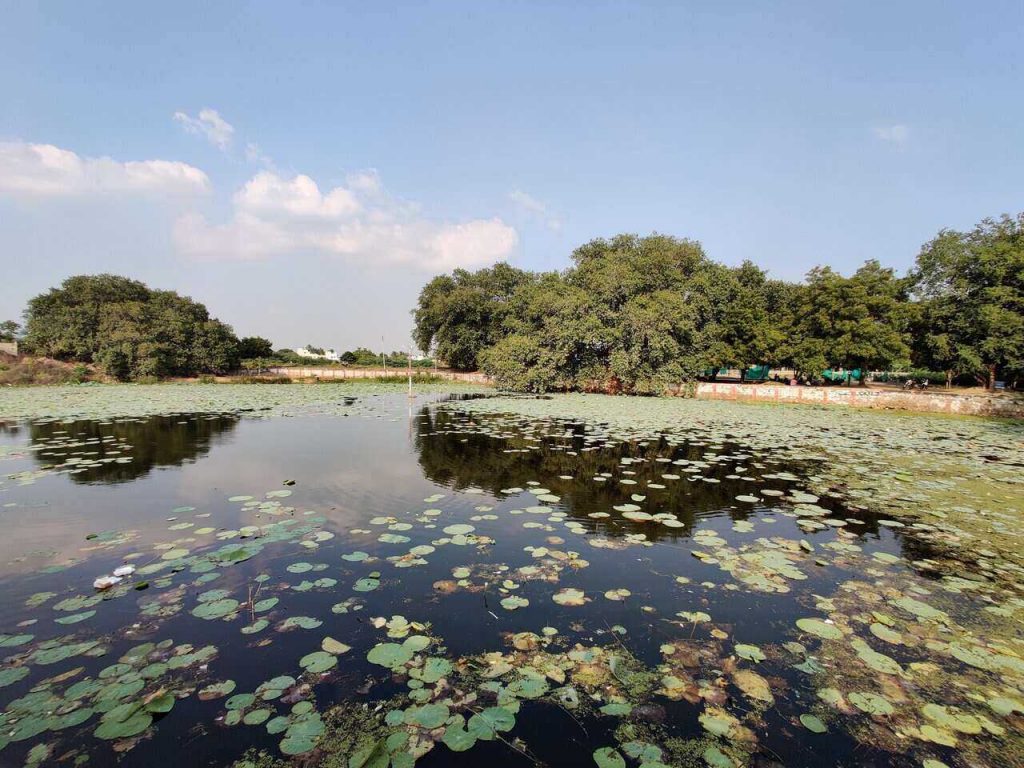
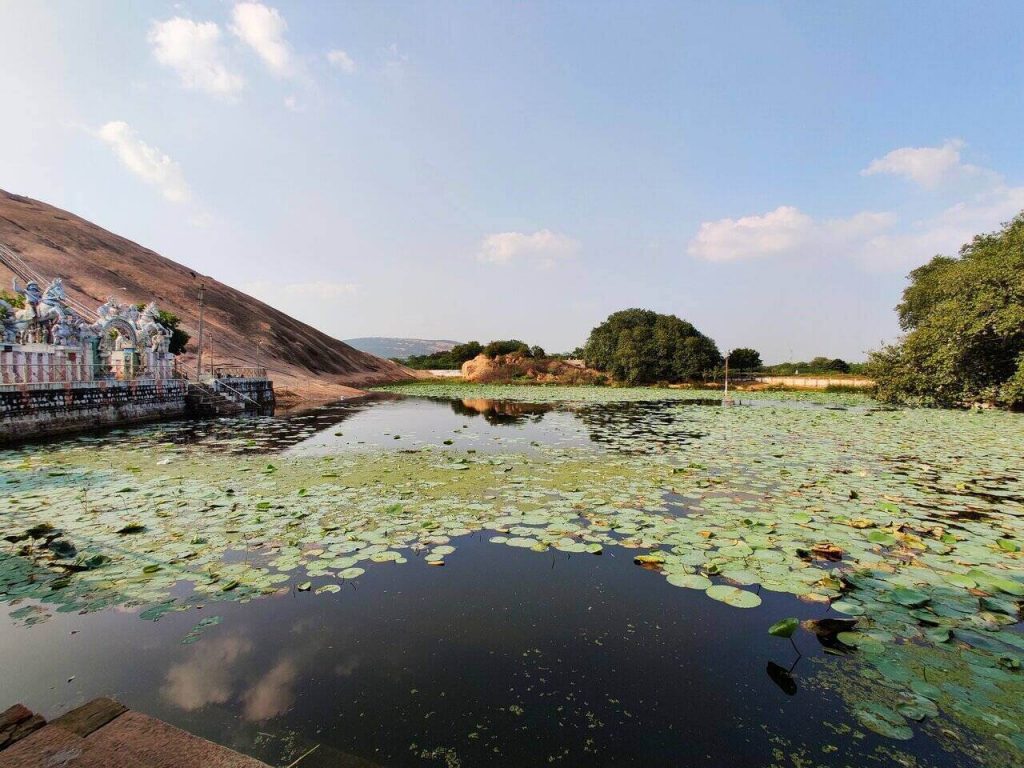
Looking up I saw the steep shallow steps carved in the hillock with just a railing to hold on to. I said a little prayer, ignoring the shooting pain in the knee and clutched the railing for my life as I trudged my way uphill. The ascent was not for the weak and faint-hearted – while I was not the latter, the pain in my knees reminded me that I needed to get back to my yoga sessions. The scenery was breathless but so was I. Suddenly the shallow steps vanished and only the glossy surface of the rock spanned out in front of me. Clinging to the rail, I said another prayer as I scaled the vertical rock face, desperate for the summit. But the climb was not in vain. As I reached the summit, I realized that a slice of history was right in front of me. A wall of rock sprouted beside a natural spring and was filled with eight carvings. I learnt that it was called Pechipallam and it dated back to the 10th century. There was hardly anyone and I was told that these Jain caves Madurai were literally one of the hidden places to see in Madurai.
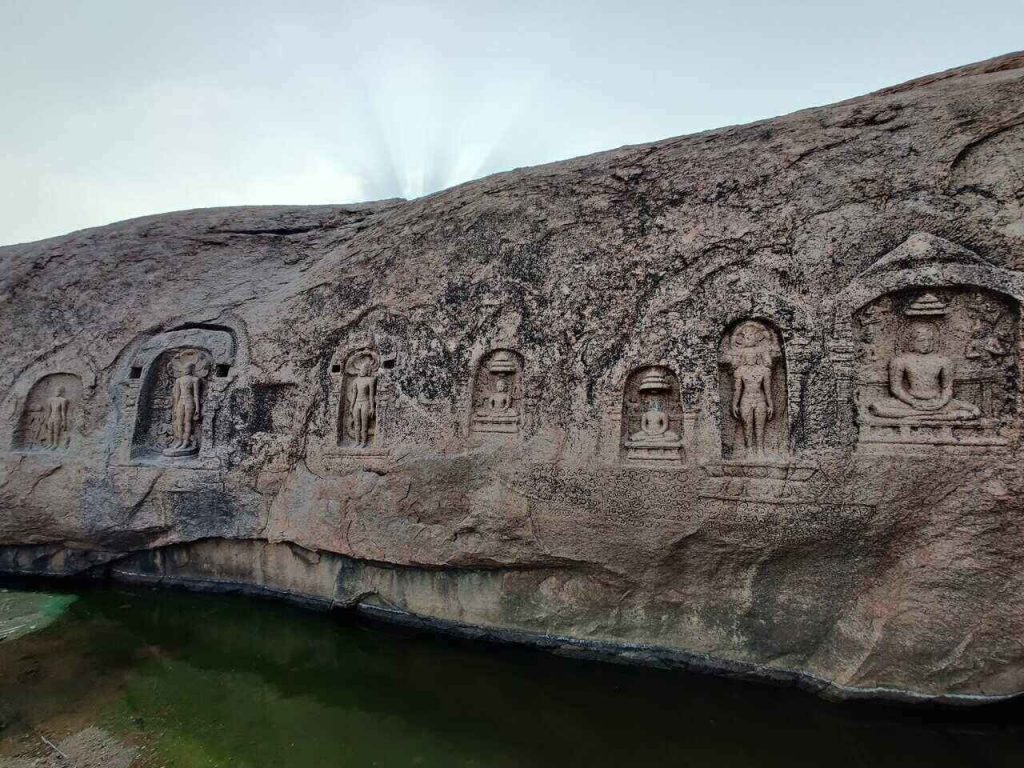
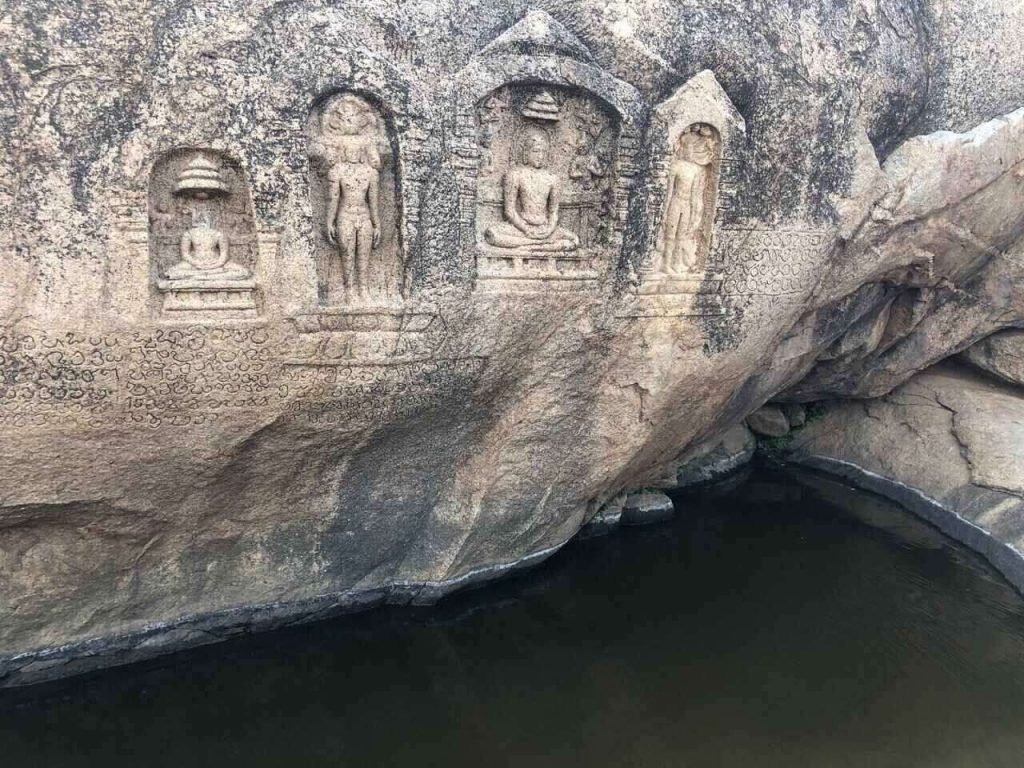
For a moment I was spellbound. An open gallery fanned out in front of me. The Samanar Hills Madurai were known for the Jain sculptures and I was lost in the art. The wall was filled with carvings of Jain teerthankaras, including the 24th and last of them – Mahaveer. There was another carving of Bahubali standing tall . He is believed to be the son of the first Teethankara, Adinatha or Rishabha, one of the ancient kings . “The one with the strong arms” as he is referred to is also called Gomateshwara and Shravanbelagola in Karnataka is known for the 65 feet statue that was built in the 10th century. But coming back to the Jain caves Madurai . this site was also historic for its presence of inscriptions written in Tamil Brahmi and Kannada, the former over 2200 years old and also dating back to pre Ashoka era. There are over 15 caves in and around Madurai with several ancient inscriptions in the same script. However Samanar Hills Madurai seemed to be the most accessible among the rest.
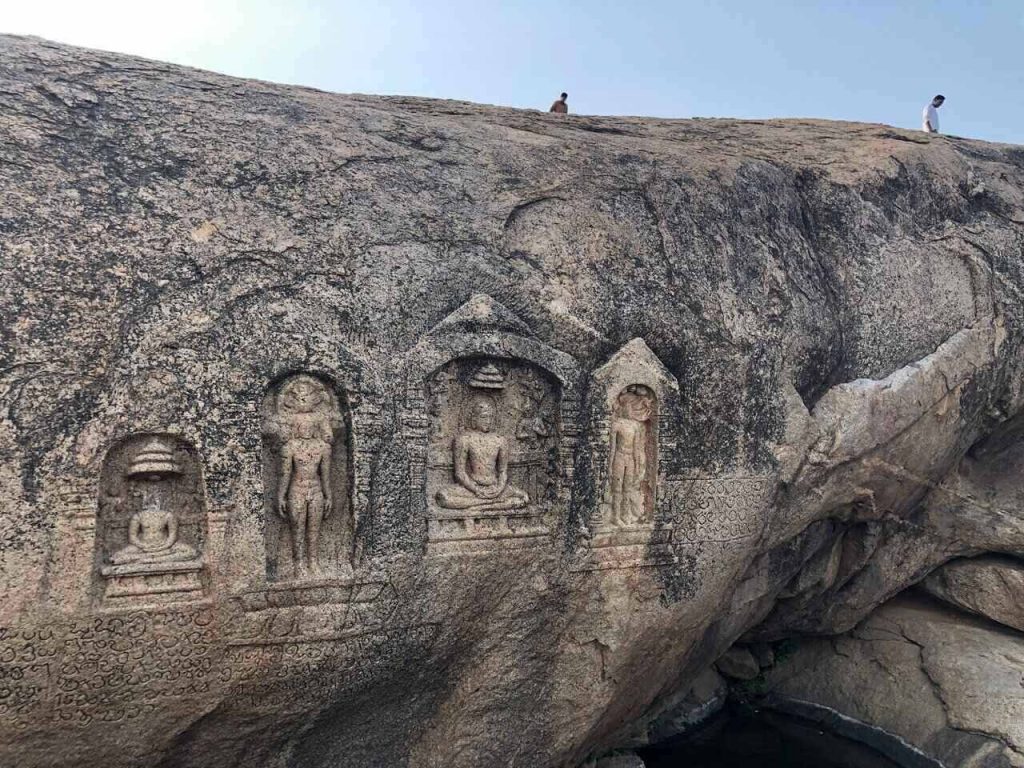
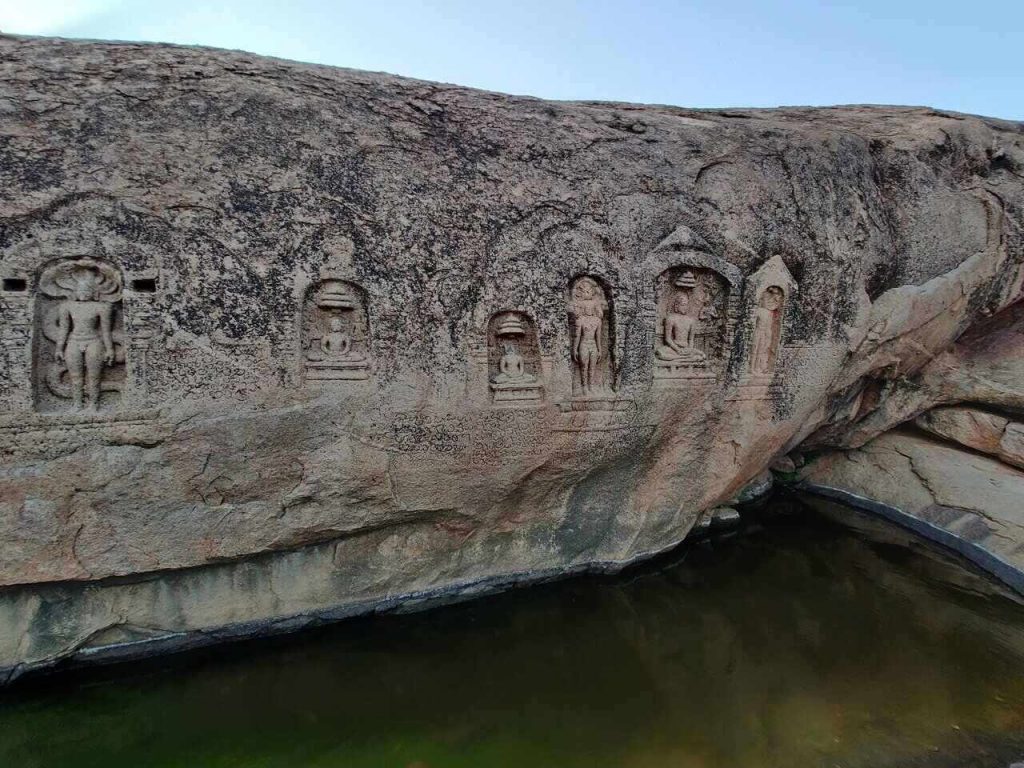
During my course, I learnt that a faction of Jains had moved away from modern day Bihar under the guidance of Bhadrabahu and settled in Karnataka, around present Hassan and Malenadu. A small group went further south towards Tamil Nadu. Most of these Jains were Digambars and they slowly created their own cults and legends and wrote their own canons as well. The Tamil Jains further became indigenous and independent and carved their own identity. Most of the ascetic Jain monks went to remote hillocks and meditated.
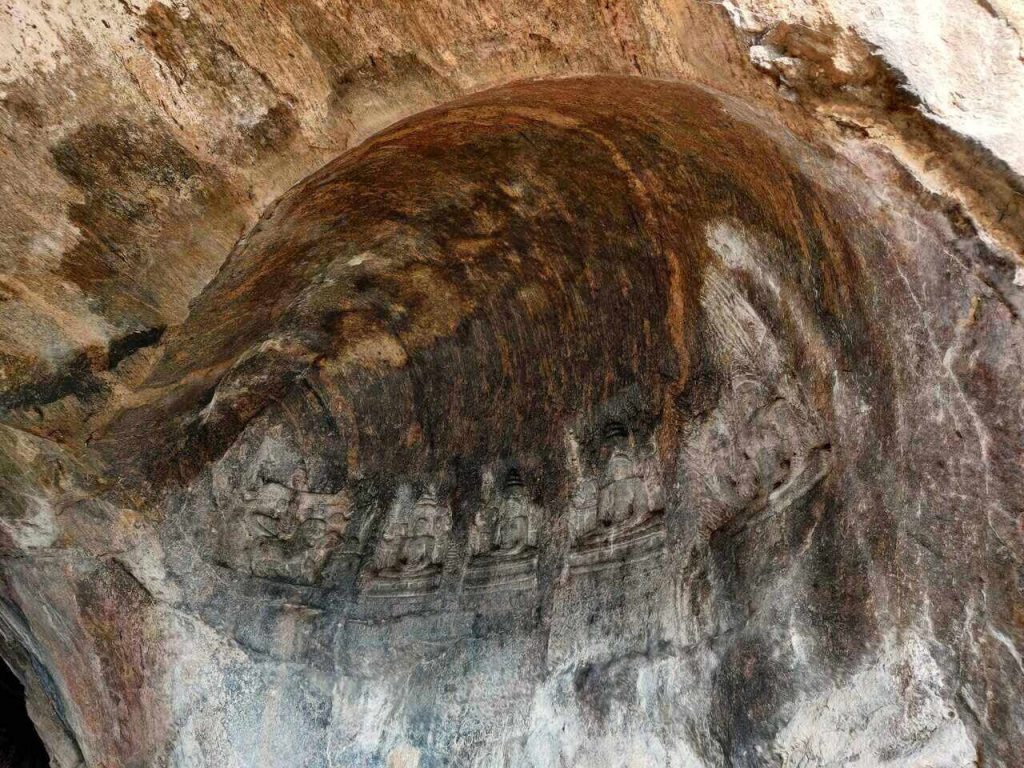
They slept on rock beds inside caves and painted a few of them and some of these ancient sites are now slowly being discovered. The inscriptions here in Pechipallam recorded the stone beds where Jain monks meditated and practised sallekhana, where they fast until death. It is also believed that there was a monastery atop the hill , where also several Jain students from presernt day Karnataka and Tamilnadu studied under the monks.

Back in Keelakuvilkudi though , after that little slice of history. I found my way back to the Ayyanar temple and the descent , though very perilous treated me to more views. One of the old men at the temple then directed me towards another site in the hillock called Settipodavu. A leisurely climb took me through verdant woodlands as I walked under the shade of banyan trees, shrouded from the sun took me to a small hillock in the Samanar Hills. There were more carvings inside the cave but I could hardly see anything clearly etched on the rocks.
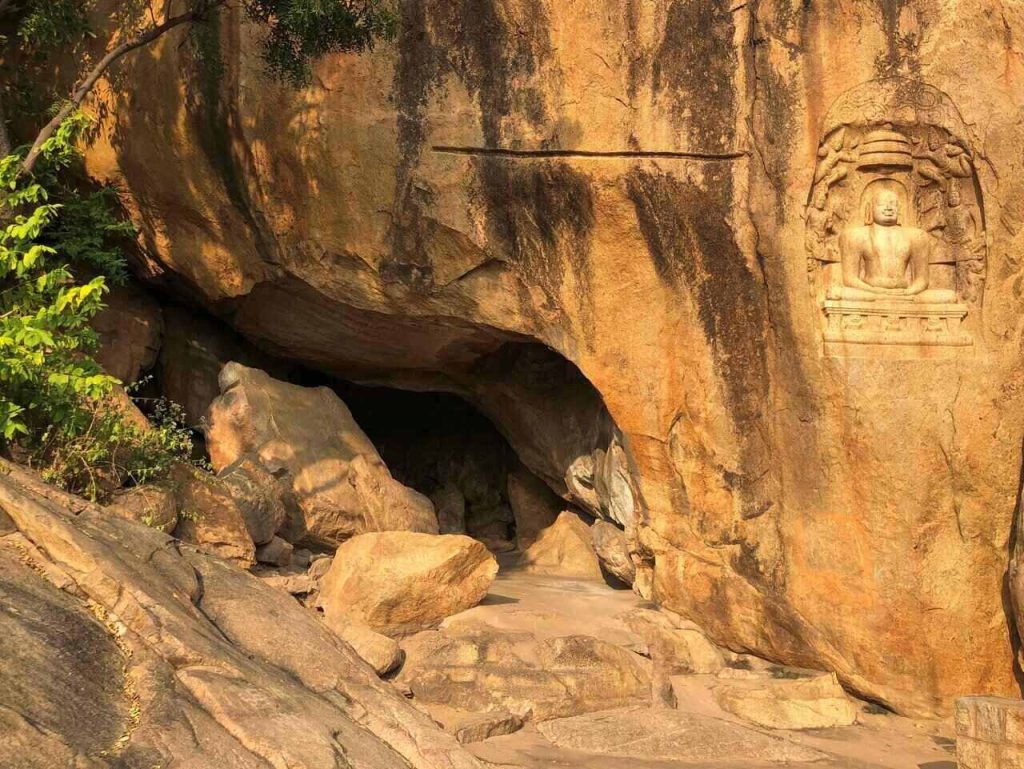
Jagged edges on the rockface took me to a dark cave where I saw faded carvings on the wall. The bats were not happy to be disturbed from their siesta but as I walked ahead an intricately carved sculpture of Mahaveera greeted me. The sun’s rays glossed over the carving, lighting it up, giving it a warm glow. I learnt that this carving was one of the best-preserved Jain sculptures, located in the Jain caves Madurai
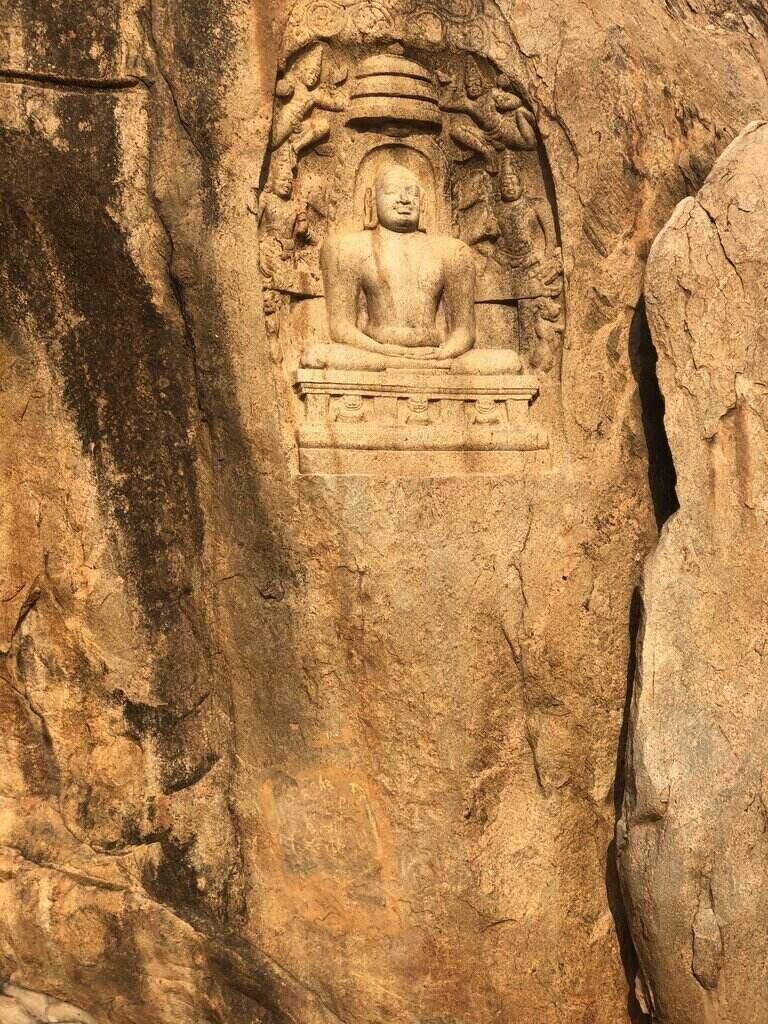
Standing there and basking in the sun, I stared at the sculpture, wondering what would have prompted the Jain monks to seek such intense, remote destinations, far from the madding crowd, lost in the lap of nature , sometimes beautiful and at other times harsh and isolated .
There were many more hidden sites and places to see in Madurai but my tryst with heritage at Samanar Hills , made me realize that a lifetime is not enough to explore India. Perhaps I will come back another day to see more Jain caves Madurai.
